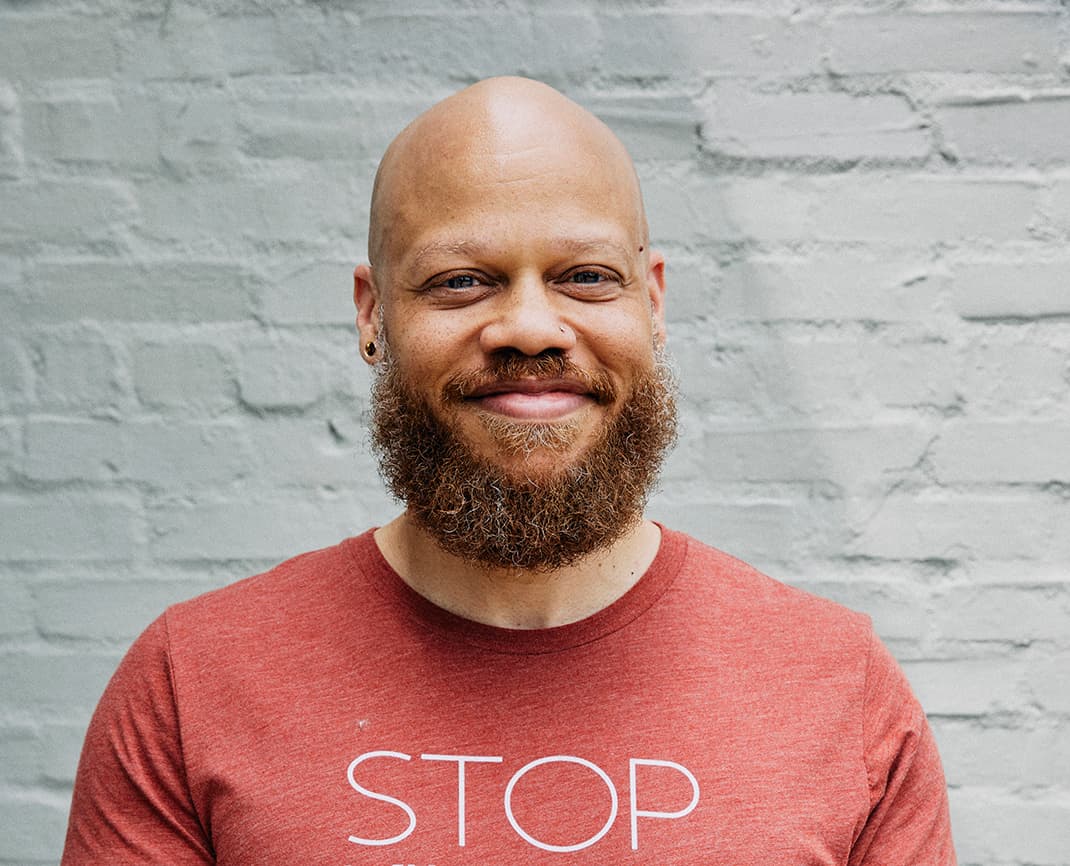Community Voices: A Westsider’s Take on Progress and Preservation
The Atlanta BeltLine is a transformative project that is reshaping the city and connecting neighborhoods in new and wonderful ways. The energy and excitement isn’t just because of the trails,...
- Parks & Trails
- Community Voices

The Atlanta BeltLine is a transformative project that is reshaping the city and connecting neighborhoods in new and wonderful ways. The energy and excitement isn’t just because of the trails, rails or greenspace though. The heartbeat of the BeltLine is the people who live, work, play, and learn along the corridor. This blog series introduces you to neighbors you may not know.
By any standard, Davyd Smith can be considered a long-term BeltLine neighborhood resident. Attracted to the vibrancy, diversity, and affordability of West End, he bought his first home there in 2004 before the Atlanta BeltLine, now across from his property, was even a thing. In 2016, he moved to Westview, “more of a ‘homey’ neighborhood”, and began renting his West End house. Since then, he has watched the transformational impacts—both good and bad—that the project has had on his community.
“Since those early discussions with the community, I’ve watched to see how it would turn out,” he shares while standing outside A/C Clutch Bike Shop. “First, it was larger in scope with both the linear park and light rail that were going to spur growth. As far as the development and property value increases, we expected to come; it came.”

Davyd Smith has lived on the Westside of Atlanta since 2004. Photo: The Sintoses.
When the Westside Trail was first completed and Smith had more time for cycling, he rode it often with the cycling group, Red, Bike and Green Atlanta. Safer than riding on Atlanta streets, they would incorporate the BeltLine into their rides. Then, as development continued around the corridor, he could be found walking the BeltLine to Ponce City Market or occasionally attending the BeltLine Lantern Parade. Lately though, as fatherhood and work have taken up more of his time, the Westside Trail has become an outlet for him and his girlfriend to go for a weeknight walk and engage with the neighbors when the trail is free of weekend tourists.
He carefully chooses his words as he ponders the complexity of the BeltLine project.
“Everyone is concerned with affordable housing now. I know people who’ve been displaced; I’ve seen houses on my street flip or get torn down and replaced with new houses. While it’s likely displacement would’ve happened anyway due to the nature of capitalism, now that the Beltline is here it should continue to be a part of the conversation on how to reduce the harm that can come with irresponsible development. I’ve welcomed the BeltLine in my neighborhood.”
“The promise of positive development, it’s happening,” he continues, musing over the new businesses and breweries that have appeared in walking distance, which he attributes, in part, to the BeltLine. “I do worry, though, about the West End losing its character. I remember when each of the neighborhoods had a particular vibe, and West End felt like more of a cultural hub.”
Over the years, Smith has gotten to know members of the Atlanta BeltLine, Inc. staff. Through various interactions in the community, he has observed how they engage the community and grapple with the complexities of the infrastructure project.
“It makes me feel good that [they’re] a part of this. We talk about the BeltLine conceptually, and about the impact, ” he shares. “I’m glad to know that efforts are being made to look out for residents in this community.”
“The BeltLine has been one of the most transformative projects in this city, and it is essential that it continues to responsibly shape the future of Atlanta.”
Subscribe to In The Loop, our monthly newsletter, for Beltline news, events, announcements and more.